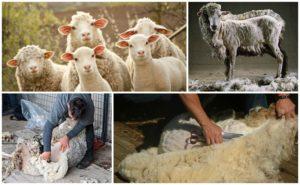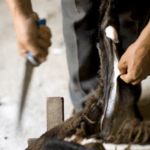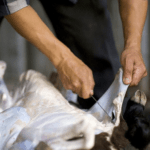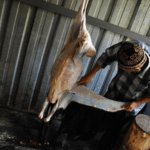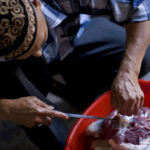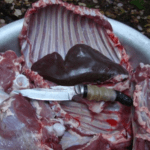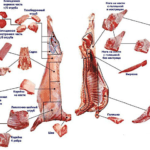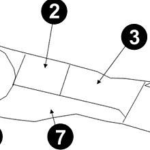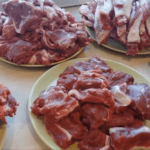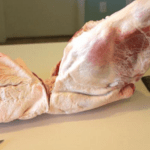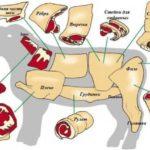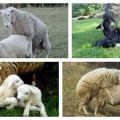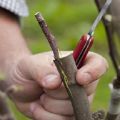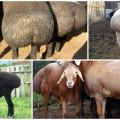How to slaughter a ram and carcass cutting scheme, meat categories
What method, how to properly cut a lamb or a sheep - many who do not trust the choice, preparation of meat to outsiders ask a similar question. In fact, knowing the nuances of felling, it is not so difficult to cope with the task. Armed with such knowledge, it is easy to sort the meat according to your needs - into a kebab, soup or roast. At the same time, the animal will be spared unnecessary torment, if immobilized, slaughtered it correctly.
Preparing to slaughter a sheep
The first step is to organize the workplace. Near the site where the animal will be slaughtered, you should prepare in advance tools, clean rags, water (provide access to the water supply), including dishes. You also need salt, it will help preserve the meat, prevent spoilage.

Knives should be sharpened carefully, it is better to do this in advance, and not rush on the day of slaughter. It is equally important to prepare the animal. In order for the meat to be devoid of an unpleasant odor, the ram should be put on a diet, limited in food.

Hints, tips for cutting can be found in the video:
Required tools
Pre-prepared, razor-sharp knives are half the battle. In total, they are usually used by 2:
- Straight.
- Folded.
The first one is needed for actually pinning a ram, cutting carcasses, cutting meat into pieces.

The second is for skinning. You can do with one single knife, but it is more convenient to work with two. If the ram will be slaughtered, cut by weight, then a hook for suspension and a rope (cable) will be needed.
Workplace
Slaughter requires a level, clean area free of debris and foreign objects. The same applies to the desktop. It must be washed, cleaned thoroughly. You can cover the surface with foil or oilcloth, so it will be easier to clean the table after cutting.
Animal preparation
Another important step. If you plan to use wool, skin, the animal is sheared in a few weeks. This step can be skipped if there is no need to obtain wool. Approximately 24 hours before slaughter, the ram is not given food, without denying water. This approach will cleanse the intestines of excrement, and the meat will get rid of the unpleasant odor.Drinking plenty of fluids will also improve the quality of the lamb.

Slaughter rules
First you need to immobilize the animal. Several methods are used for this, the most popular is electric shock. The legs are bound. Sometimes this stage is enough for professionals, and then just stab a ram or cut his artery.
One of the goals that the slaughterer must achieve is to take the animal's life quickly and in the least painful way. There are large arteries on the ram's neck, which can be cut at once and released the blood. It is best for this to sharply tilt the head of the animal back, while simultaneously holding it in an immobilized position.
Next, a sharp and deep incision is made with a sharpened knife, so that the throat is dissected from ear to ear. Then you need to hang the carcass for the blood to flow out. Bleeding is necessary, as this method avoids spoilage of meat and improves its quality. The ram is left in a suspended state for 10 minutes.

The ways
Several methods of slaughter are practiced by professional miners. Regardless of the method chosen, the ram must be prepared according to all the rules. Then use 3 clogging options:
- on the side;
- suspended;
- in Buryat.
If the first method is chosen, then you will definitely need an assistant to stab the animal. The ram is hobbled, laid on its side and positioned in such a way that the legs are not towards the slaughterer, but away from him. You need to quickly, in one motion, cut the ram's throat. Without preparation, experience cannot be handled here.

The method of slaughtering a ram with hanging the animal is often practiced. To implement it, you will need a structure of 2 racks and a crossbar fixed to them. This can be a ready-made structure or specially organized before slaughter. So the skin, the carcass gets dirty the least. The structure must be designed for the weight of a ram, have adequate stability and reliability.

The latter method (Buryat) is considered inhumane and even cruel. Its essence is as follows: in a certain place, opposite the heart of the animal, a small incision is made into which you need to stick your hand or a wooden stick.

Next, you should not slaughter the animal, but put pressure on the heart valve so that the organ stops. The death of the ram does not occur immediately, so this method is rarely recommended for untrained slaughters.

Immobilizing an animal
Before you cut, cut the throat of the ram, you need to immobilize the animal. This is done for 2 reasons: to avoid prolonged agony, torment of the ram (in convulsions, animals can kick, beat their head) and not stain the skin and meat.
If electroshock is used, the ram need not be tied. A high voltage discharge will render the animal unconscious. All that remains is to cut his throat.
Slaughter and bleeding
To kill a ram quickly and in the least painful way, most often his throat is cut. Depending on the experience of the slaughterer, you can slaughter the animal on its side, hanging it from a bar or hook, piercing the heart with a special knife. Be sure to release blood so that the meat is preserved longer.

For this, the carcass is suspended by the hind legs and left in this position for 10 minutes. When the blood comes out, you can start cutting the ram.
How to cut a ram carcass
First of all, this stage is notable for its laboriousness: it accounts for most of the time spent, if we evaluate the slaughtering procedure as a whole. Using simple rules, you can quickly and accurately cope with the task.
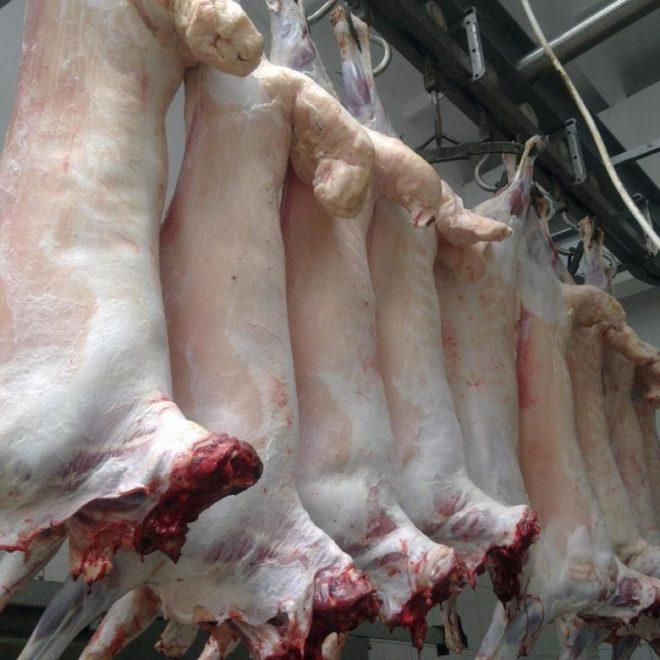
First, the skin is removed. A flat extended surface - a table or a large, clean sheet of metal - is best suited for this purpose.In extreme cases, you can work on the floor in a house or garage, having previously covered it with a film, oilcloth.
Skinning
Before skinning a sheep or ram, prepare a place. Then the carcass is laid on the back, then a small (about 3 centimeters) incision is made on either of the legs, so as not to affect the muscles, only the skin. Next, a dagger, a narrow knife or a rubber tube is gently pushed into the gap formed. The purpose of the operation is to create a layer of air between the muscle tissue and the outer shell. Then you can displace the resulting bubble, achieving complete separation of the lamb skin.
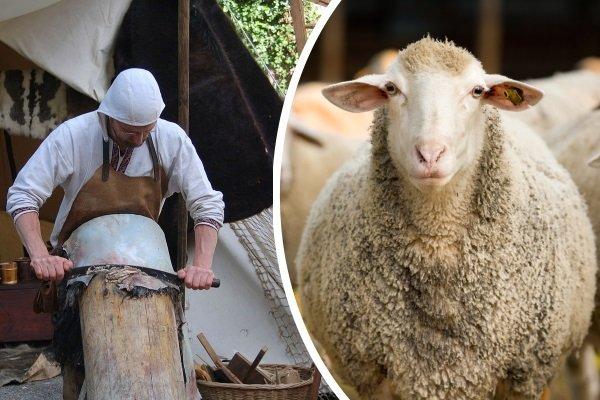
Gradually, air should penetrate everywhere except the sternum. By lightly patting on the skin, the desired effect is achieved. Professional miners remove the skin without damage, leaving it attached to the muscles only on the back.
It remains to hang the carcass of the ram by the leg, tie it with a rope and finally remove the skin.
Removing entrails
Before butchering the carcass of a sheep of any breed, not necessarily Katum, you should get rid of the entrails and fat. It is recommended to work in the longitudinal direction, moving along the abdominal cavity. When making incisions, the rule is simple: the organs must be visible, but they must not be damaged.
Without removing the entrails, further cutting of the carcass is impossible.
They act especially carefully with the gallbladder so as not to spoil the meat and entrails. First, a section of the rectum is removed. It should be bandaged immediately. Then an incision is made along the trachea, the esophagus is removed. Lungs and heart are consistently given. The liver must be removed with particular care, the same applies to its separation from the gallbladder. On the intestines and stomach there is a layer of fat, an omentum.
Cutting scheme
When cutting a lamb carcass, several schemes are used. One of them involves cutting the ridge so that 2 approximately equal halves are obtained - the front and back. It is very important to cut the spine along the cartilage tissue, and not crush it anywhere.
At the next stage, they begin to work with the back: first, they remove the fat tail fat. The legs should be gently rocked at the joints to separate them from the carcass. The hindquarters and the femur are separated by acting along the acetabulum. The front part is cut in the same way. When the legs are separated, they proceed to the ribs, cutting them off from the spine.
So that the meat does not smell like fat, you can completely separate it, getting lean lamb. If someone likes fat, you can leave a layer. In no case is it worth throwing out sheep fat, it is extremely useful. The cutting of the carcass itself is shown in the diagram. You can also butcher a lamb.
The simplified form of cutting includes a slightly smaller number of operations. The diagram shows:
- Neck.
- Loin.
- Saddle.
- Hip.
- Scapula.
- Brisket.
- Pasha.
Sheep meat should be processed as soon as possible - salted, frozen or put into food.
The same applies to the hide, so that it does not disappear.
For clarity, the steps are shown in the video:
Skin canning
A zealous owner should not lose anything. The skin of a ram can be saved and used later. The following preservation methods are usually used:
- Wet.
- Dry.
Both require a lot of salt. According to the first method, the skin of a ram is laid out in the shade, thickly sprinkled with salt. Once the salt is absorbed, the procedure is repeated. After 3 days, the skin rolls down, you need to start from the neck part. According to the second method, the fleece, after sprinkling, is hung out in the fresh air, while the temperature should not exceed 20 degrees. If salt is combined with mothballs, the skin of the ram will be reliably protected from pests.

Meat quality categories
To classify lamb, 2 categories are used - the first and the second. They differ in the amount of fat, the appearance of the carcass. The first category includes lamb, in which the muscle layer is clearly visible.Gaps are allowed along the ribs, the pelvic part.
Another distinguishing feature is the sharp protrusions on the dorsal vertebrae.
If the visual quality of the meat is worse, there are some deviations, then it is assigned to the second category. Tips for cutting, sorting are given in the video:
Frequent mistakes
Typical mistakes of inexperienced ram slaughters are considered improper preparation of a ram for slaughter (non-observance of aging without food), unsuccessful cutting of arteries.
Also, they often forget to release blood, they cut the ram carcass incorrectly. All these problems are solved by the acquisition of experience, accuracy, thoroughness of operations.
